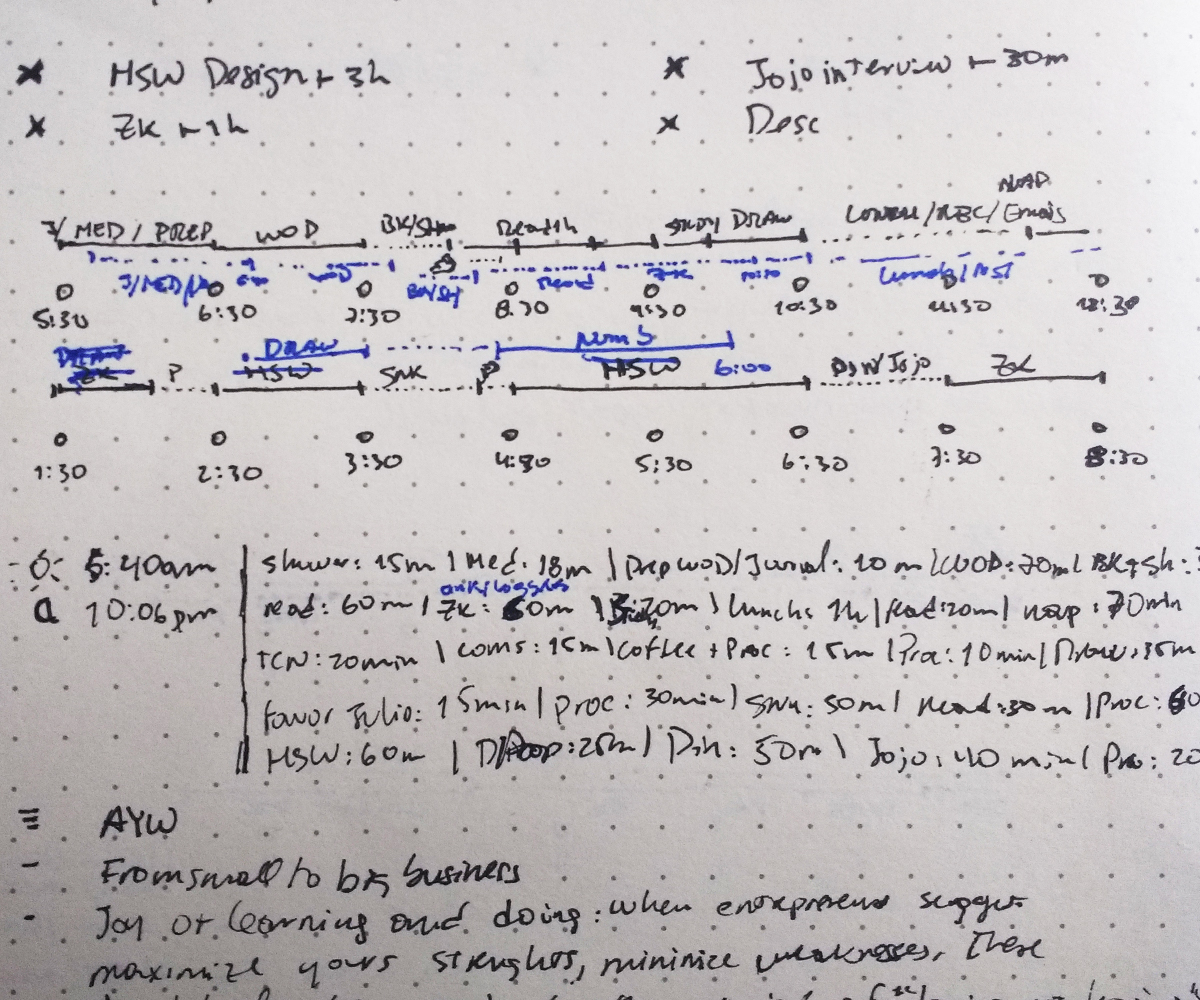Sorry, I don’t have the time — I introduce you to what used to be my favorite utterance before I practiced time management, which is something experts define as the ability to use one’s time productively. Today you’ll learn an easy way to squeeze more time out of your busy schedule and make your day shine.
I want to start a side project. I want to create an online course. I want to learn Japanese. I don’t have the time. Any time a new opportunity knocked at my gate I ditched it out under this fallacy. What an idiot.
How did I know if I had the time or not? By looking at my fancy agenda, of course. But was all that dung written in there accurate? Was there a way to optimize it?
The Time Management Secret
I sincerely find it ridiculous the amount of work put into dealing with time management that I read in books. I know some folks put lots of effort into creating these methods. In my world of ignorance, I dare to question whether all that is necessary. Decision matrix, risk tree, funnel analysis, and bla, bla, bla.
It’s not surprising that we tend to complicate things when they can be simple. It’s good that there is a thing that helps humans make decisions: emotions.
Mix that up with urgency, and voilà, here’s the simple secret:
- Measurement: what is not measurable is not manageable.
- Decision: the will to sacrifice what’s not inline with your goals.
That’s all that’s needed to simplify this time management mystery. Foremost, we must examine our daily activities through a magnifying glass.
Once we have a clear view of our activities and the time we invest in those, we can play a fun game. Eliminate what’s not convenient and replace it with the new cool activities.
1. Measuring like a maniac
I dare you to tell me how many minutes you think it takes you from the moment you wake up until you sit down to have breakfast. Don’t even try to break it down by activities, such as brushing your teeth, burping and taking a nice poop.
Whatever number you give me, it will be as fake as a three dollar bill. Most of us are not maniac enough to measure that type of activity. It requires being a freak like this humble server. The good news is that you can ignore becoming a freak and follow this curated guide. So how do we do it?
We are creatures of habit. Most of our daily tasks share patterns. Wake up, get ready for anything we have to do in the day, perform, eat, rest, sleep, start over again. Even for those who certainly are an exception to this, there are patterns.
From now on, track how much time you invest in every specific little activity you do in a “typical day” (week slash workday).
- Write down each activity, e.g., morning shower, breakfast time, commute, reading, social media, messaging, work (specific to project/task), handstand workout, and so forth.
- Write down how much time each one of those took.
- Now jaw-drop at the actual time you take to do stuff 😱
Amazement is inevitable when you compare the actual time with your expectations. This is the moment we develop time awareness. This simple exercise is mind changing. It’s a punch of reality.
The Toolset
ANALOG MAGIC
Pencil and paper. It’s a practical way to quickly capture time entries. In my example, black lines represent what I thought it would take. Blue lines what it actually took. What a naive young man I was.

TOGGL
I must admit I use an application that changed my way of managing time. Meet toggl, my go-to app for logging even the silliest of activities in my life. It’s also useful for work, to bill clients and myself. Once you spend one month logging activity, the reports become another time awareness reflection. Time to think about how much one hour of your time is worth in relation to anything you’re doing.

2. Eliminating like a surgeon
Productivity is being able to do things that you were never able to do before.
Franz Kafka, Writer
Mr. Kafka is right. The new thing to do today is: have courage. To use our creativity to find time that we are willing to sacrifice for that new activity that we want to integrate into our optimized routine.
We know with about 90% accuracy how we invest time on a given day at this stage. This information is hyper valuable. You have no idea how much money Google and Facebook would pay for this. You have it at your disposal now, how do you use it?
Considering the time you spend awake, let’s do this simple exercise:
- Group items in three categories (for a big picture view):
- Leisure: things you do because you want to. Reading, meditation, drawing, workout.
- Work: things you do because you have to pay the bills.
- Rest: napping, eating, pooping, shower, commute.
- Sum up all the time per category. For example; leisure 10h, work 3h, rest 4h.
- Identify what it is that you want to integrate into this equation. Is it more work? More leisure activities? Do they fit your awake time?
- Identify which specific actions are sacrificial.
- Time to decide: what are you willing to eliminate?
Are you willing to cook all the food you eat in a week in a single day instead of investing one hour daily to prepare for every meal? To reschedule your workout time to be shorter? To allocate time for messaging in bulk instead of doing it sparingly across the day? To say no to unexpected interruptions?
If the answer is yes, welcome to the world where you can do more things you want to instead of things you have to do—the world when you start having time.
Do I Want This Circus Of Time Tracking?
Being productive is a matter of habit. Once you develop solid time awareness, you will hardly allow one minute to be spent doing things you don’t want to do. Instead you’ll be doing things you were avoiding under the excuse of being too busy.
This wise awareness for managing your time can have multiple applications. I’ll break them down before I finish this article.
- Allocate time for creating an optimized to-do list (see the scrutiny part).
- Focus on that side project you want to begin.
- Allocate time for leisure.
- Dedicate more time to your family or relationships.
- Dedicate time for learning something new.

